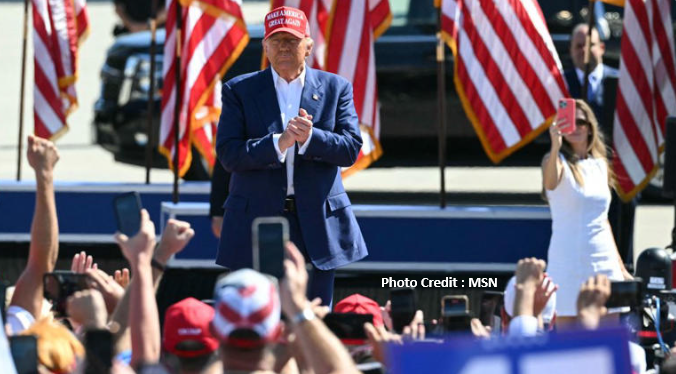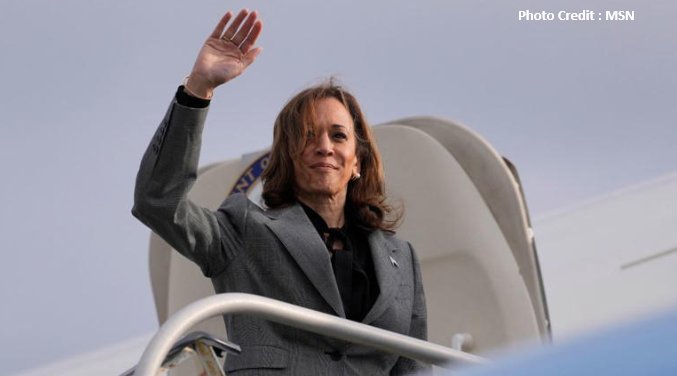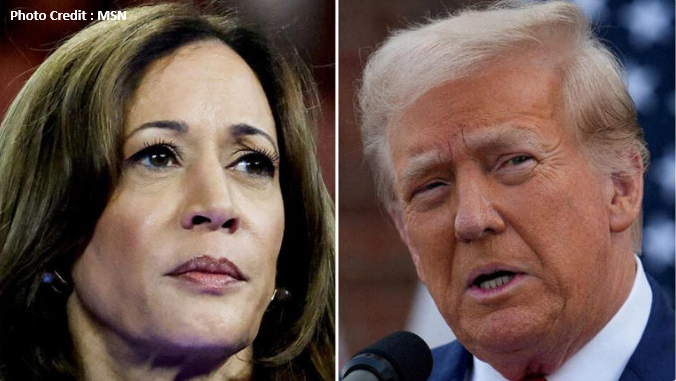The Race to the White House is in full swing. The American political landscape is known for its volatility, unpredictability, and heightened emotional stakes. Former President Donald Trump has been in the news for his reckless statements that sway voters and scare them.
The Race to the White House | Trump’s Wild Rhetoric
The American political landscape is known for its volatility, unpredictability, and heightened emotional stakes.
As we approach the upcoming election, the race to the White House is shaping up to be one of the most contentious and electrifying contests in recent history.
Donald Trump, the former president, has been making headlines with increasingly wild rhetoric that has both captivated and alarmed voters.
Meanwhile, the political battleground remains as uncertain as ever, with key swing states playing a crucial role in determining the next occupant of the Oval Office.
In this blog post, ‘The Race to the White House’, we will examine the chaotic environment surrounding Trump as he gears up for a return to the presidential race, the implications of his actions and statements on voter sentiment, and how the race to the White House remains a toss-up, as observed in various battleground states.
Trump’s Tumultuous Campaigning
A Return to Chaos
Trump’s candidacy in the race to the White House has brought back memories of his unapologetic, chaotic style during his previous terms.
Many believed he would tone down his rhetoric in a bid to appeal to a broader audience. However, recent events suggest otherwise.
Instead of adopting a more disciplined approach, Trump has engaged in outlandish claims that have rekindled fears of division and chaos reminiscent of his presidency.
For instance, his controversial assertions—such as the unfounded rumor that immigrants in Ohio are “eating pets”—have left analysts and political experts baffled.
These statements not only stir an emotional response but also create an environment ripe for misinformation, further fracturing the already polarized electorate.
Trump’s refusal to condemn inflammatory remarks made by allies, particularly those with racist undertones, adds fuel to an ongoing narrative that he is not merely running a campaign but rather a rallying cry for his most ardent supporters.

The Impact of Wild Rhetoric on Voter Sentiment
Despite the rampant chaos, one noteworthy aspect of the current race to the White House is the surprisingly stable poll numbers associated with Trump.
Political analysts, including CNN’s senior political data reporter Harry Enten, have indicated that the current presidential race is historically close, drawing comparisons to landmark elections, such as John F. Kennedy’s narrow win over Richard Nixon.
As much as Trump’s rhetoric may repulse some voters, it simultaneously galvanizes his dedicated base, proving that wild expression can still yield loyalty.
With his statements making headlines, one must question if he has, paradoxically, managed to maintain a competitive edge despite the apparent backlash against his policies and attitudes.
Democrats’ Strategy: Betting on a Chaotic Past
Riding the Wave of Dissent
Democrats, specifically Vice President Kamala Harris, appear to be banking on the notion that voters will recall the divisiveness of Trump’s administration, hoping it will sway undecided voters in the race to the White House.
Harris, who is seen as a formidable candidate, has articulated the need to present a clear contrast to Trump’s incendiary approach.

In her recent remarks, Harris suggested that Trump is “looking for an excuse” to avoid engaging with her on important issues.
By framing the debate as a critical opportunity for discourse, Harris aims to highlight the differences in leadership style, proposing a more united and stable approach to governance.
The Close Call: Swing States Matter
The significance of swing states cannot be overstated in the race to the White House.
According to Michigan’s Governor Gretchen Whitmer, who represents a crucial battleground state for Democrats, “This election is going to be close.”
Her observations echo sentiments shared by political insiders regarding the critical importance of states like Michigan, Pennsylvania, and Wisconsin.
The outcomes in these states are pivotal, often determining the overall winner in the electoral college.
Recent polling data reflects this uncertainty. While Harris has seen a slight uptick in her numbers since her debate with Trump, suggesting a potential momentum shift, the overall race remains tight.
With national polls indicating that Harris garners 50% support against Trump’s 47%, the margins highlight just how precarious the situation is for both candidates.
The Uncertain Future of The Race to the White House: What Lies Ahead?
Trump’s Reflections and Future Prospects
In a rare moment of introspection during an interview on “Full Measure,” Trump hinted at the possibility of not running for office again if he loses in November.
“I don’t see that at all,” he remarked, indicating a potential end to his political career.
This admission highlights the high stakes involved in this race to the White House and the desperate need for both candidates to secure victory to avoid political obsolescence.
The Path Forward: The Need for Strategy
As both campaigns look forward, strategic preparation is essential. For the Democrats, striking an effective balance between appealing to swing voters while energizing the base is crucial.
Harris’s proactive engagements and her attempts to reclaim lost ground with women voters are vital components of a broader strategy that demands meticulous execution.
For Trump, narrowing the gender gap is of paramount importance, as his recent posts on social media reflect an urgent need to convey a message of protection and safety for women—a demographic where he has faced significant challenges.
His shout to “protect women at a level never seen before” serves as a potential pivot, but whether it resonates with voters remains to be seen.
Conclusion: A Toss-Up to Watch
The race to the White House is marked by remarkable unpredictability, especially with Trump’s increasingly erratic behavior juxtaposed against the calculated strategies of the Harris campaign.
As both candidates evolve in their messaging and voter appeals, the stakes could not be higher. With both sides vying for control of the narrative and the key states, the outcome remains uncertain.
Political commentary and public sentiment will undoubtedly shift in the coming weeks as events unfold.
Still, one critical takeaway is that the race to the White House is a multifaceted contest defined not just by the candidates’ policies, but by their ability to engage, provoke, and connect with an electorate hungry for direction in a deeply divided country.
In the end, every statement made, and every campaign strategy employed will contribute to the unfolding narrative of who will ultimately succeed in claiming the most coveted political prize in America. As we watch this unprecedented race, let us remember the power of your vote.
Welcome to WordPress. This is your first post. Edit or delete it, then start writing!


Hi, this is a comment.
To get started with moderating, editing, and deleting comments, please visit the Comments screen in the dashboard.
Commenter avatars come from Gravatar.